Having a great product is no longer enough to build a successful business.
The eCommerce world is large — with millions of businesses and even more shoppers. To make sure that your products reach people who are genuinely interested in your product, you’ll need to define your target audience.
In this blog, you’ll learn how to define a target audience for your business and how to reach them along with real examples.
Contents
Goals of defining target audience
Businesses identify and define their target audiences to achieve business goals in the long run. In every stage of your business, you need to clearly know who you’re selling to. This will determine the success of your brand.
1. Determining the feasibility of your product
This goal should be set before launching your business. Feasibility is about predicting if your product or service will be profitable. Understanding your target market and their pain points will help you determine if your business will be successful.
It will also give you insights into areas that may need improvement.
2. Set proper pricing
How to price products is a challenge faced by many new entrepreneurs. Making sure you’re not pricing too low or too high is indeed a dilemma.
If you know your target audience well, you’ll get a headstart into setting a price. Along with other elements like profit margin, the knowledge of how much your customers are willing to pay for the product will let you set an appropriate price.
3. Build a strong brand
Your brand is how your target audience perceives you. To strike the right chord with them, you need to clearly understand them. Here’s a guide on building a brand for small businesses.
4. Improve product or service
Getting to know your target audience will enable you to improve aspects of your business.
5. Maximise marketing results
Understanding your ideal buyer persona is a strong tool to have to get the most out of your marketing efforts — be it social media marketing or paid ad campaigns. You’ll be able to create content that is useful to your target audience and distribute it on channels they’re most active on.
Identifying target audiences: the basics
When it comes to defining your target audience, you can just stick to the basics or go in deep and create a detailed persona. Let’s look at the questions you need to answer to get a basic picture of your target audience.
1. Who will use the product?
Who will buy your product? This might seem like an obvious step, but many businesses actually skip identifying their buyers correctly. Let’s look at an example to understand this further:
A business sells organic soaps based on different themes. Who will buy their product? Of course, everyone uses soaps. But that doesn’t make their target market ‘everybody’. Their products are for women who are hyper-aware of skincare, want to use only natural ingredients, and are fun-loving. The soap brand now has a specific demographic which it can target. It’s narrowed down from ‘everyone’ into a very specific and niche audience.
Key takeaway: Do the same for your brand by identifying how unique you are from other similar brands. Create a character sketch for one ideal person who would love to buy your product. This will be your guide for further targeting.
2. How will the product be used?
Another question you need to ask yourself when defining your target audience is about product usage.
- How often will the product be used?
- On what occasions/situations will it be used?
- How does the product function?
Let’s take a look at an example from a real DTC brand:
Heelium sells premium and comfortable products that are made with sustainable materials. They are mainly for outdoor wear (workout, sports, adventure etc). They can be used daily and can be maintained much easier than regular outdoor wear.
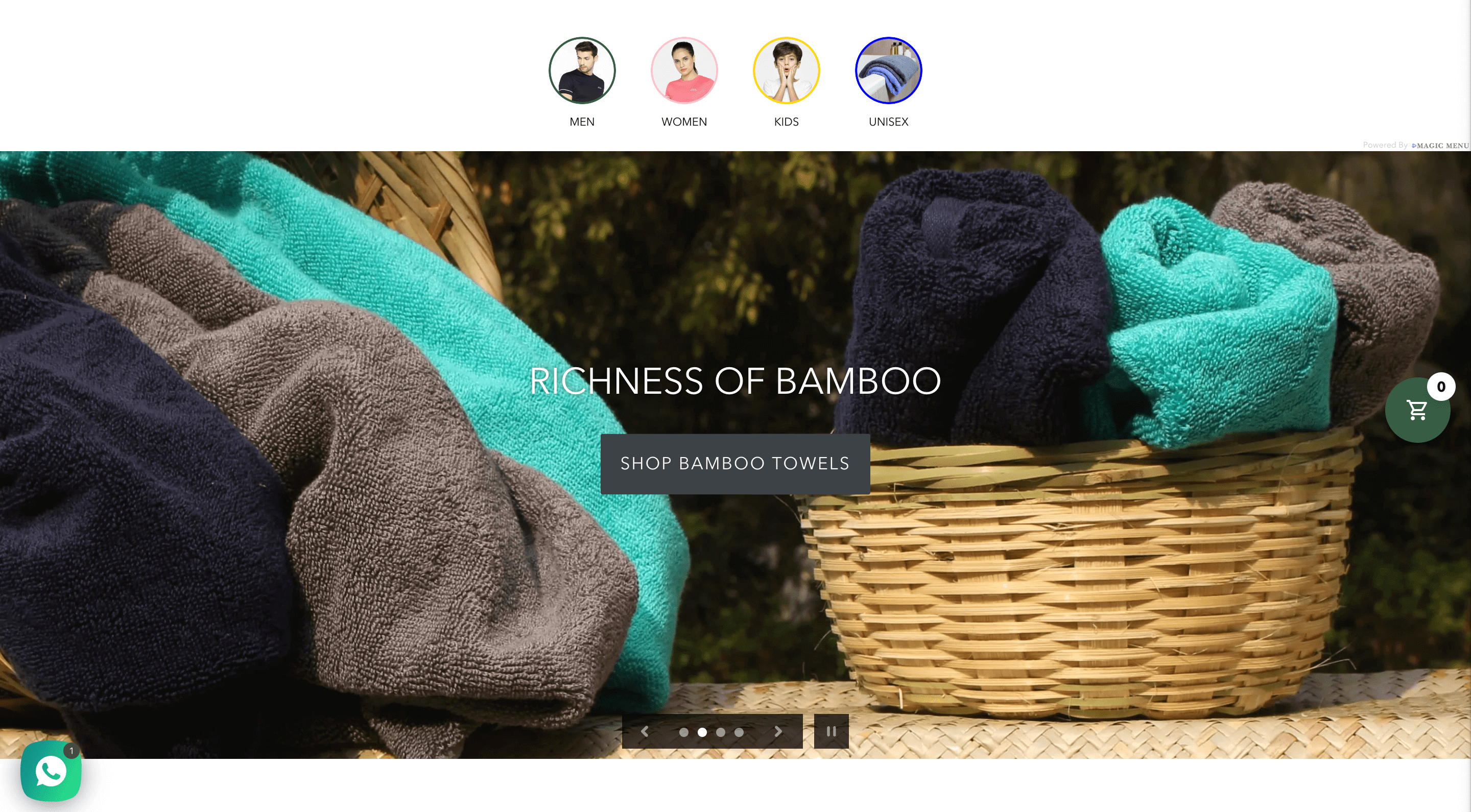
Key takeaway: Getting to know your audience starts with getting to know your product well. Defining every aspect of its usage will lead to a better understanding of who would use it.
3. What problem(s) or pain points will the product solve?
This is the most important question you need to answer. Having a string answer will let you plan more successful marketing campaigns and build a better brand.
People buy products that make their life easier, even in the least way possible. Your product might have lots of cool features and look amazing. But if customers are not convinced that it will help them, you won’t have much luck in selling it.
Let’s consider the apparel brand Saadaa. Their statement product is cotton pants available in multiple colours. Their minimal and comfortable pants are revolutionary in a fashion industry that are filled with uncomfortable clothing for women.
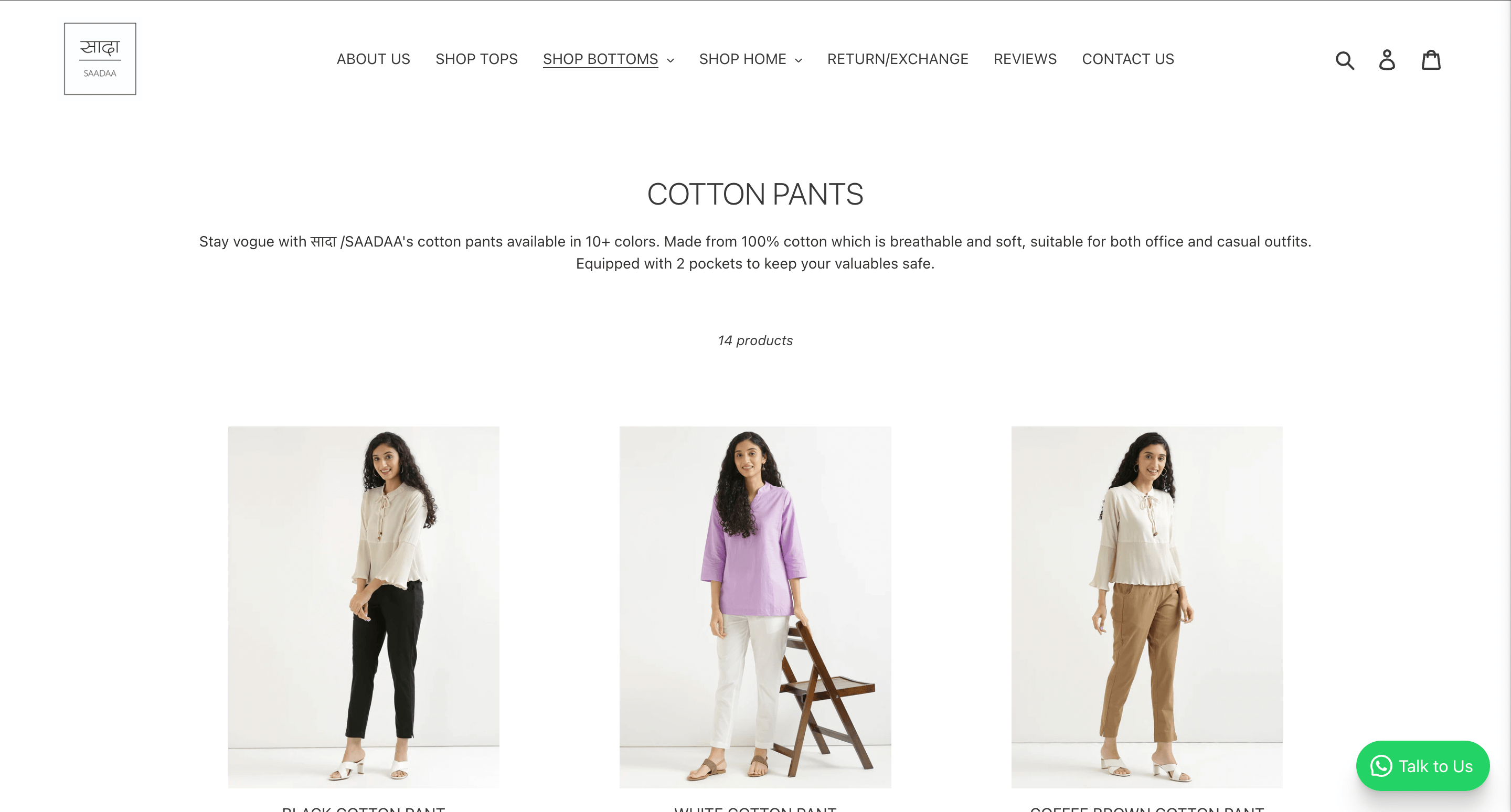
They practise sustainability in both product manufacturing and packaging. Thus, Saadaa became an instant favourite for women who want comfortable and stylish clothing, and also practices sustainability.
Key takeaway: Understanding what problems your product solves will let you find audiences that are facing those problems.
How to do audience research
With the basic details out of the way, you can go into the nitty-gritty of the target persona — generate more specific details like customers’ potential age, occupation, and income. For this, you will need to do market research. There are a number of ways to do this. Let’s have a look at the most popular audience research methods for DTC brands:
Industry reports and surveys
Certain organizations have published detailed reports on online consumer behaviour and general statistics. We at Instamojo recently published the eCommerce Trust Report — an extensive survey report on how the factors influencing customer trust online. You can download the report for free. Although it isn’t specifically related to target audience, the report will give you a headstart.
You can also find reports related to your specific niche. All you need to do is a search on Google with keywords such as [your niche] eCommerce + survey/reports.
Customer surveys and interviews
Where would you get better insights about your audience than directly from them?
If you already have a customer base or a community on social media, you can conduct interviews and short surveys to get more information about their preferences.
Offering some sort of incentive for participation – like a gift card, or discount code – will encourage enthusiastic and genuine answers from participants. The good stuff comes from asking about their daily routines or watching them use a competitor’s product. It’s important to ensure all interviewees fit the criteria of your intended market.
Here’s a list of characteristics to identify through consumer surveys or interviews:
- Location
- Age range
- Interests and hobbies
- Education level
- Job title and income level
- Language
- Preferred mode of communication
- Favorite social media platforms
- Buying motivation
- Buying concerns
Having an up to date picture of your audience’s habits is extremely useful.
You don’t need anything fancy to conduct surveys. Social media and sending survey forms via on emails are great ways to start. Here’s an example of a customer survey by a DTC brand sent on their newsletter, which leads to a survey form:
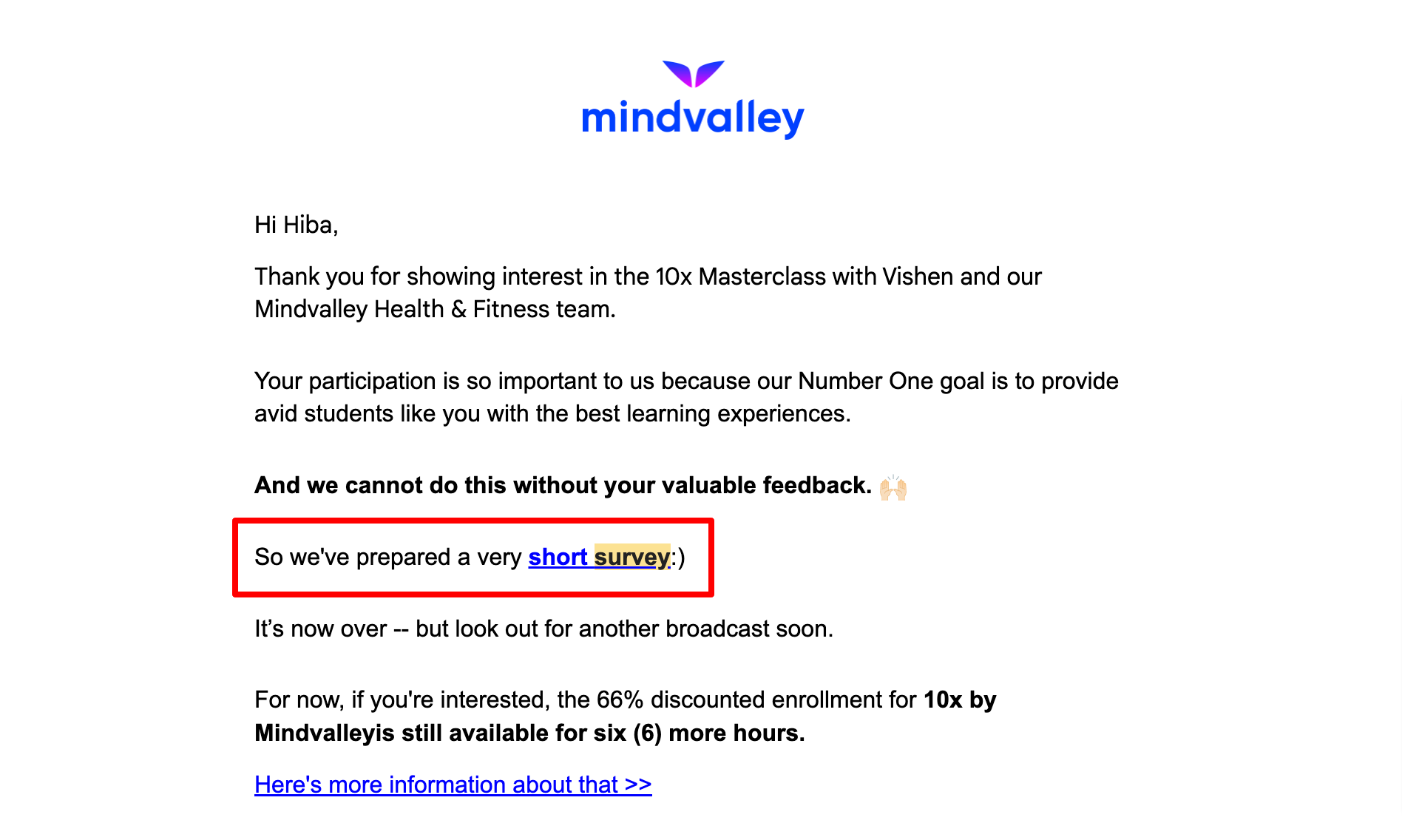
Competitive analysis
Analysing your competitors is an easy way to get more details about your target audience. Check out their social media pages and see how their audience engages with them.
Free buyer persona template
Want to have a clear picture of who you are targeting? Use a buyer persona template to outline the characteristics of your target audience. Once you have done your research about your audience, get it on paper so that you can visualize it and take action effectively.
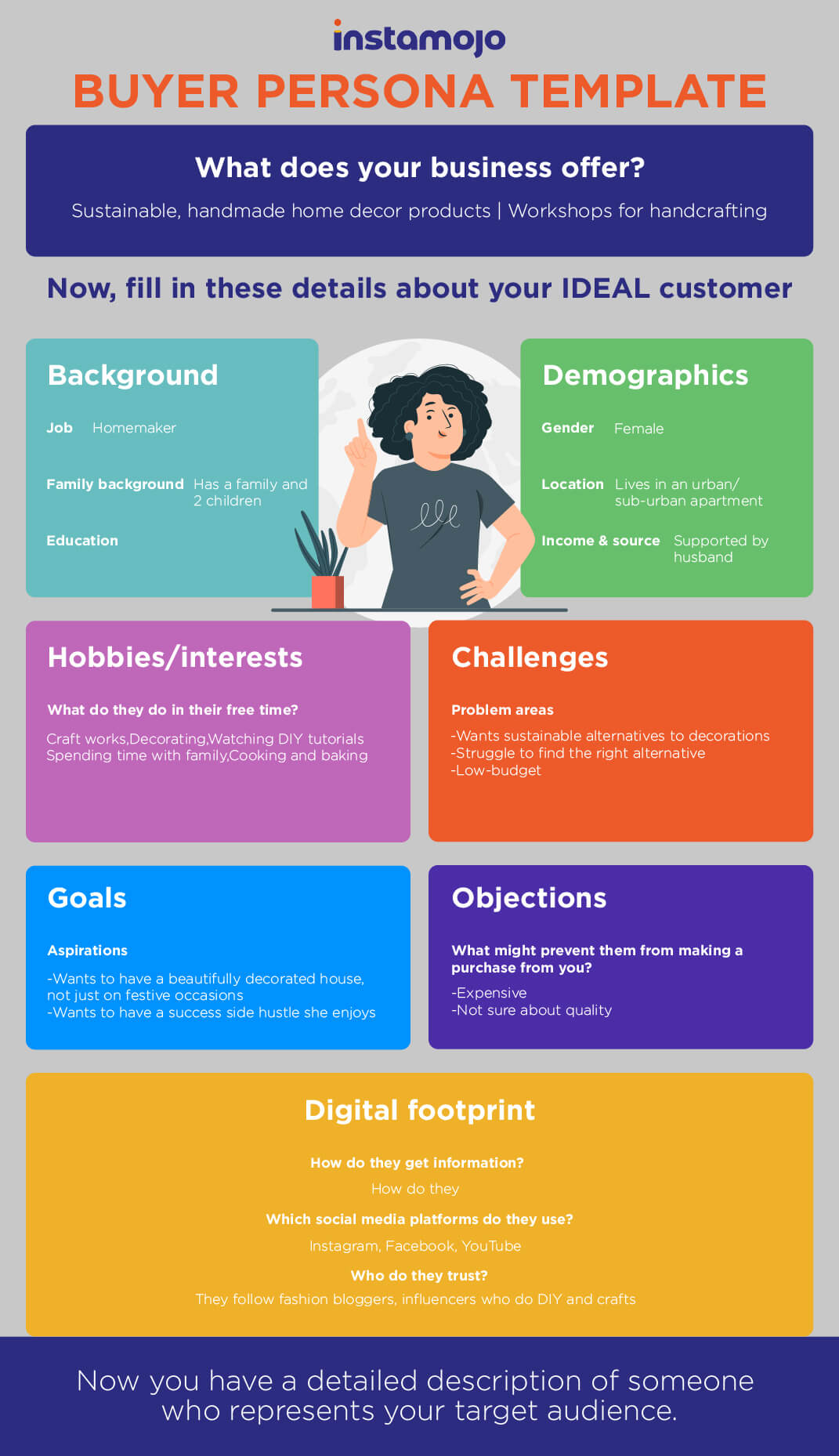
Get your free buyer persona template here
How to reach your target audience
Now that you know how to define your target audience, let’s look at how you can reach them. You can use one or more of the following methods to introduce your target audience to your brand.
1. Social media
As an eCommerce brand, having a social presence is inevitable for the growth of your business. But, simply creating an account is not enough.
Once you identify the preferred social channels of your ideal buyer, create content that resonates with them and makes them aware of how your products aligns with their needs.
For example, Fablestreet, a clothing brand which sells modern casual wear for women, has an active Instagram page where they share outfit inspiration and other helpful content for their community. They also regularly post content around their products:
View this post on Instagram
To reach you audience on social media, you can also use hashtags relevant to your niche. Influencer marketing is another strategy which businesses of any size can use to reach more people interested in your products.
Related Read: How to use Facebook for customer research
2. Digital ad campaigns
Have you noticed that when you search for a product or brand, an ad related to it will start popping up on different platforms you use? That’s the technology Google ads and Facebook ads use to get products in front of people that have a high chance to purchase them.
Contrary to popular belief, most digital ads are not expensive. You can run Facebook ads to your eCommerce store or social media page at any budget — big or small.
After you have identified the demographics, interests, and behaviours of you target audience, you can enter these information into the ad platform and get your ads targeted to high-intent buyers. This is the basic process of running digital ad campaigns.
Here’s a guide on running Facebook ads.
3. Social media communities
Find communities on social platforms related to your niche where your product will be relevant. Get active on those communities and provide value. Introduce your brand and share your eCommerce website, emphasising on the problem your product solves.
For example, there may be WhatsApp or Telegram groups that discuss home decor. A business selling home decor products can leverage this community to talk about its products.
Speaking of communities, we created a community for eCommerce business owners like you to interact, share values, and learn. Join the Instamojo online business community for free and get to know fellow entrepreneurs who are selling online.
Examples of brands that nailed Target audience marketing
1. Rubys Organics
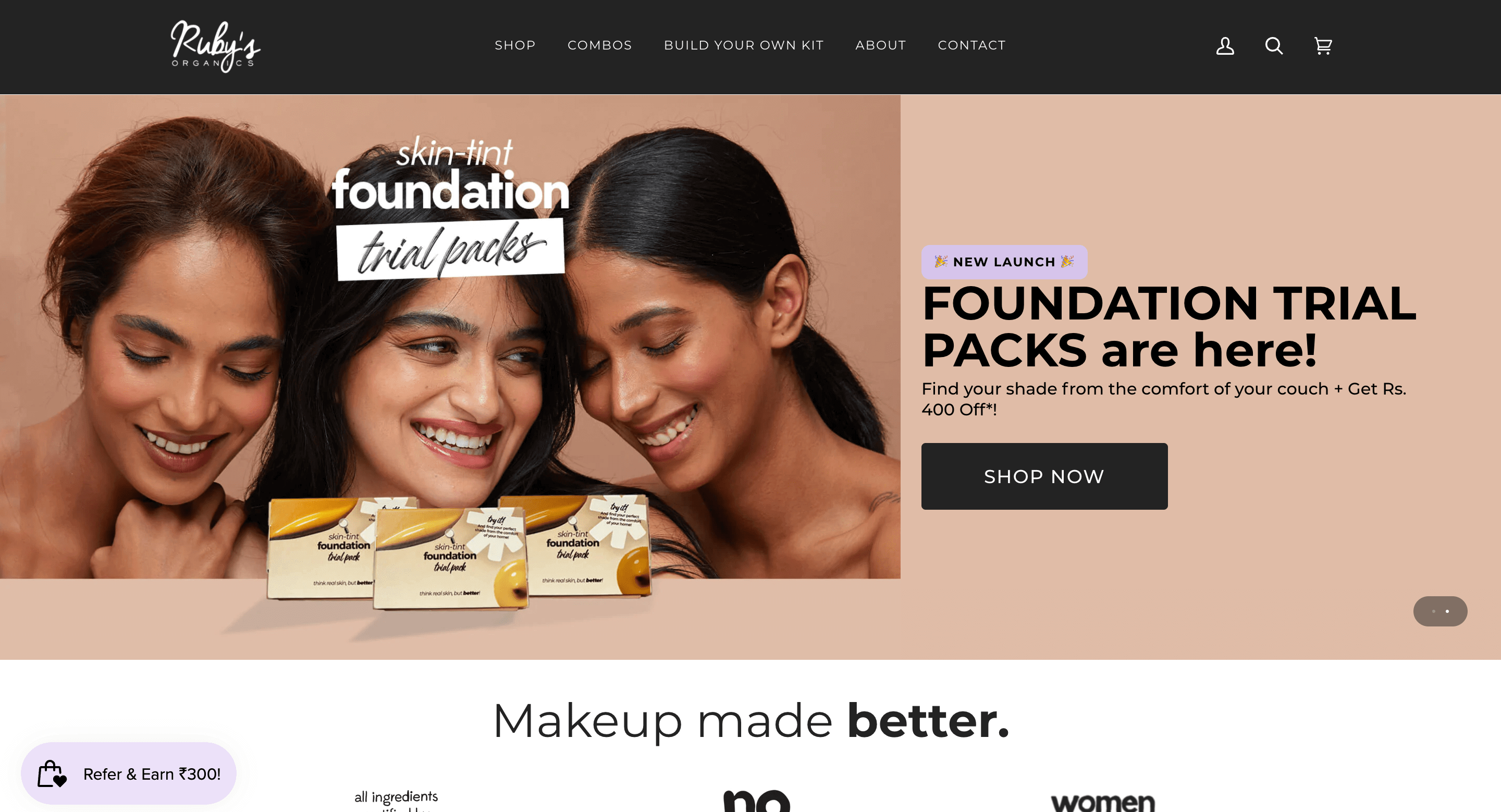
Rubys Organics is a cosmetics brand that sells cosmetic products suitable for every Indian skin tone. They identified a huge gap in the cosmetics market — products for every skin colour. Their products also claim to nourish skin and are made of organic, cruelty-free ingredients.
The brand clearly identified a target audeince in the cosmetics niche — environment-conscious women who want skin-friendly beauty products that compliment their skin tone.
Rubys Organics marketed themselves as a brand that recognises and values every skin tone and brings in ideal cometic products for them.
2. Happenstance
When was the last time you wore shoes that were both comfortable and stylish? Proper footwear is hard to come across, for both men and women alike.
Happenstance positioned their shoes as a solution to this dilemma. They marketed it as both comfortable and elegant, ending the dilemma for their audience.
View this post on Instagram
With social media, they were able to reach an audience who loved their shoes and craved the comfort and stylish footwear options offered on their online store.
Final words
A brand with a clear target audience will find it easier to handle different aspects of the business — pricing, shipping, marketing, and so on.
Want to take your target audience research to the next level? Here’s a short guide on how to create a buyer persona with free templates.

